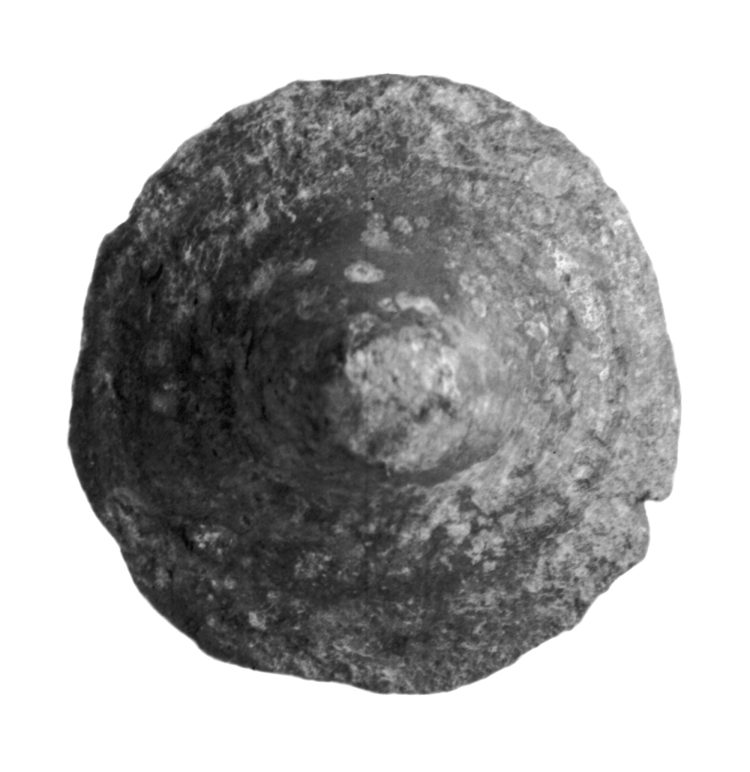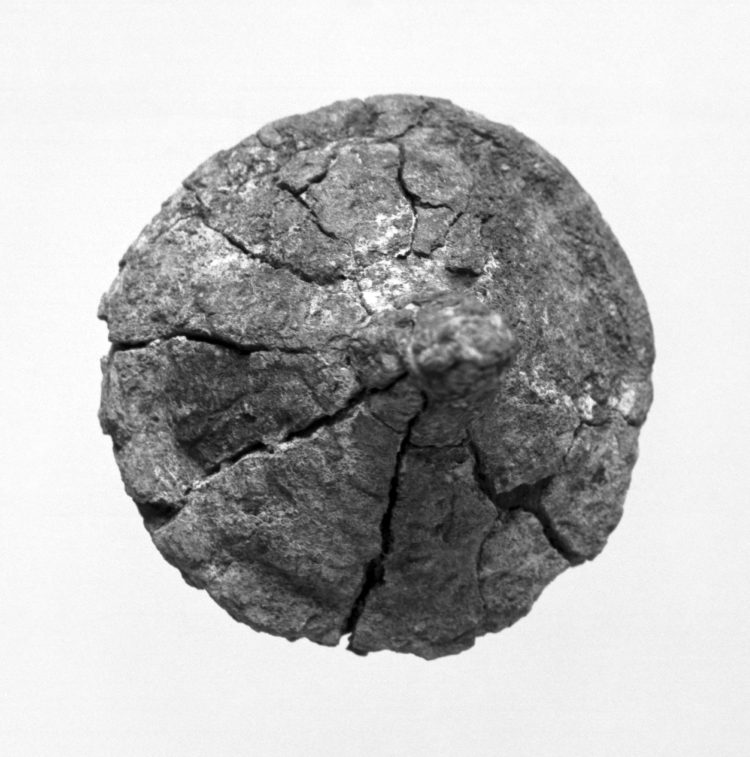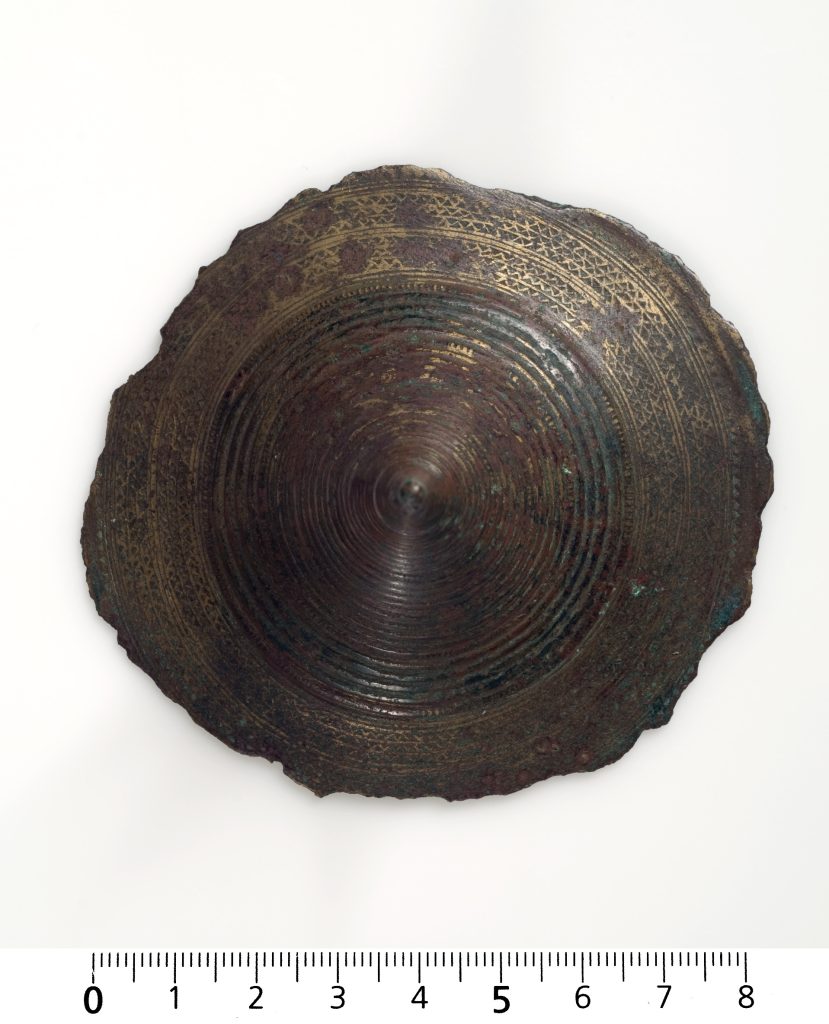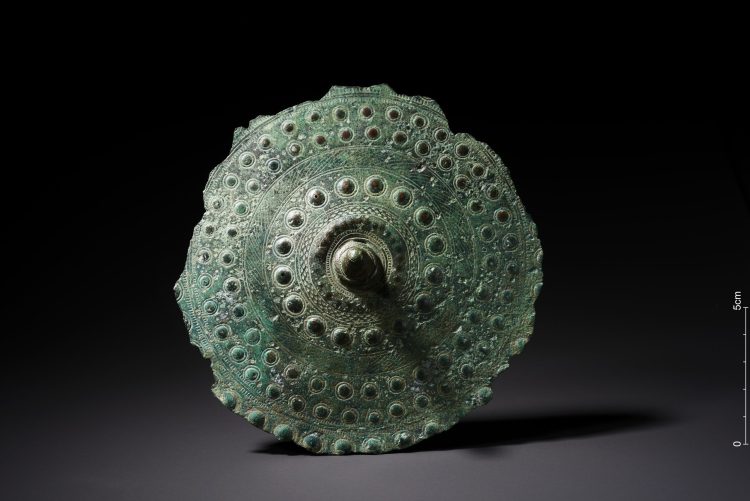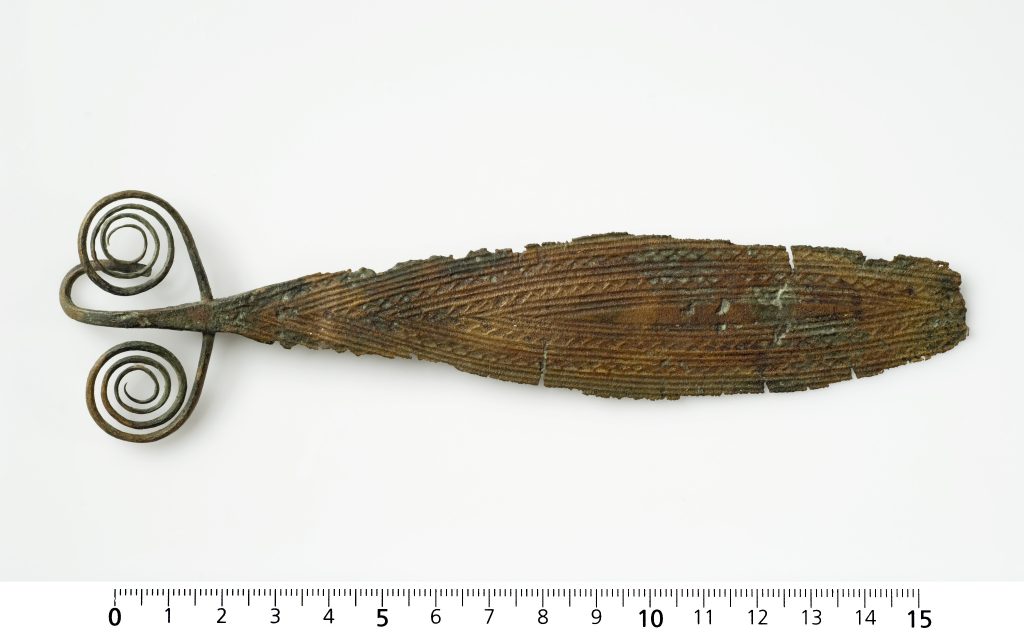
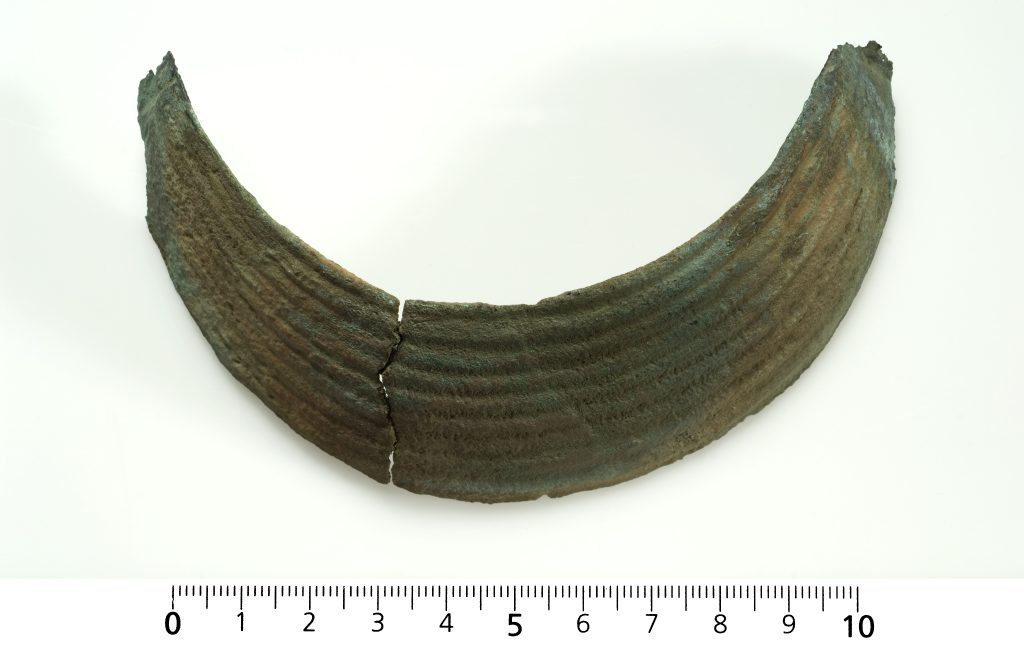
Ribbed neck collar. It has nine ribs that are weak due to corrosion. The ends are straight but damaged. The collar was broken in two and has been repaired at the museum. Width: c. 9.5 cm, the band measures 4 cm. B4320/a.
Belt plate with central, conical boss. The plate is thin and damaged around the edges; some fragments have been broken off and glued together, while some parts are missing. There is a small loop at the back of the plate, which is slightly raised towards the middle. There are seven belts of decoration, starting with parallel lines alternating with vertical parallel lines, followed by a row of large running spirals, then parallel lines and vertical lines, a row of running spirals, vertical parallel lines and parallel lines, a row of running spirals, ending in parallel lines and vertical lines around the base of the pin, which has no decoration. Width: 18.8 cm. B4320/b.
Fibula, fragment. The bow of a fibula; the pin is kept at the Museum of Cultural History in Oslo (C 123457). The bow consists of a flat and thin sheet of bronze, ending in a square section where a thin bronze rod is inserted into small holes coiles to each side, and the square section continues into an bow that secures the pin. The sheet is decorated with parallel lines and triangles. The other end of the fibula is missing. Golden in color, there are some notches along the edges of the bow. The fibula is known as a Terramara fibula and probably originated in Italy. B4320/c.
Location:
Vigrestad, Hå, Rogaland
Context:
There is very little information about the context. Several items were found at Vigrestad and sold; later the objects were sold to the museums in Bergen and Oslo. The pin belonging to the fibula is in the museum in Oslo (C 13457) as well two belt plate (C 12349) and two belt plates (C 12350). The pin is said to have come from a burial, while the belt plates were found in the ground. There is no other information about the buriall. Thus, it appears that B4320/a-c is a burial assemblage.
Date:
All three objects can be dated to the Early Bronze Age period 2.

